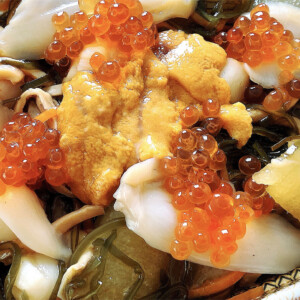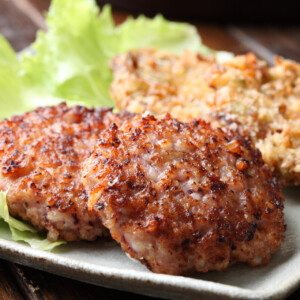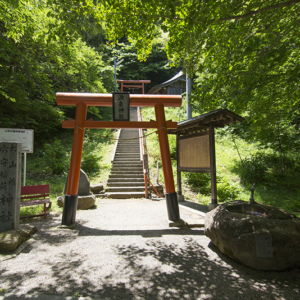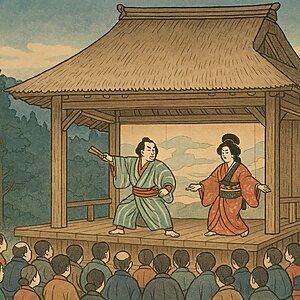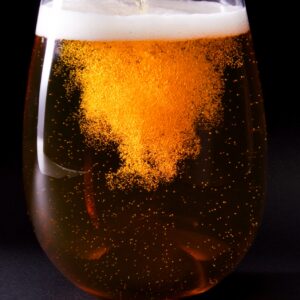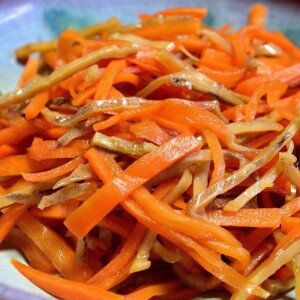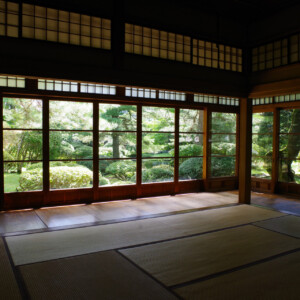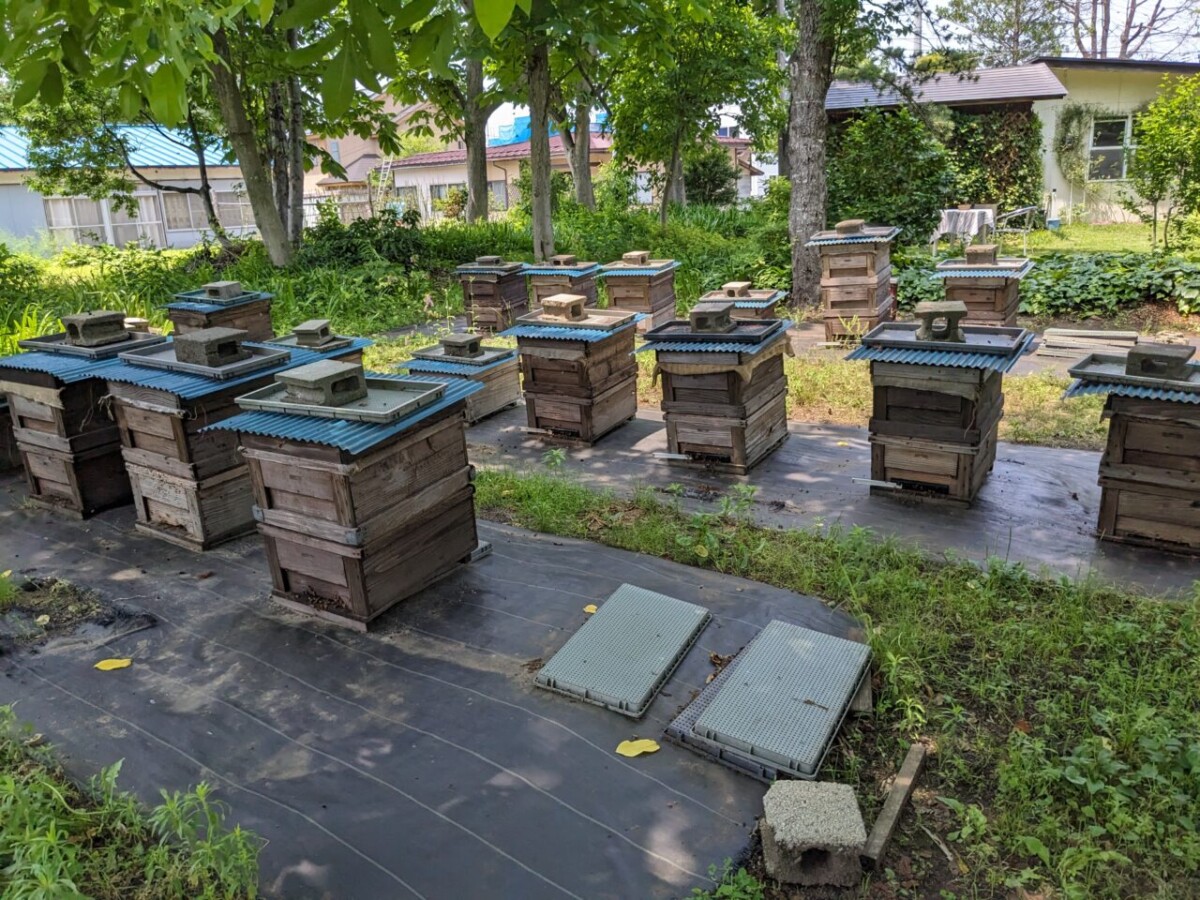
What is "Cherry Honey" from Shindo Beekeeper Garden? [Yamagata Prefecture]
table of contents
I used to think that beekeeping was done in remote areas.
In fact, I didn't have much good feelings towards bees, so I never thought it would be happening not far away from a residential area...This was my first time visiting a bee garden to hear about it.
I met Shindo, who runs a beekeeping business, at a certain event.
At the event, only honey was displayed and sold in a small booth, and in a small pamphlet introduced, "Cherry Honey" that said in a small pamphlet, so I asked him a question and found out that it is only available in Yamagata Prefecture. I asked a little about it on the spot, but I visited my house later to hear more about honey and, in fact, bees.
This article was an excerpt from what I went to Shindo Beekeeper's house and interviewed. Please read to the end. By the time you finish reading it, you may find yourself loving Mitsubee
In search of “cherry honey” produced only in Yamagata Prefecture
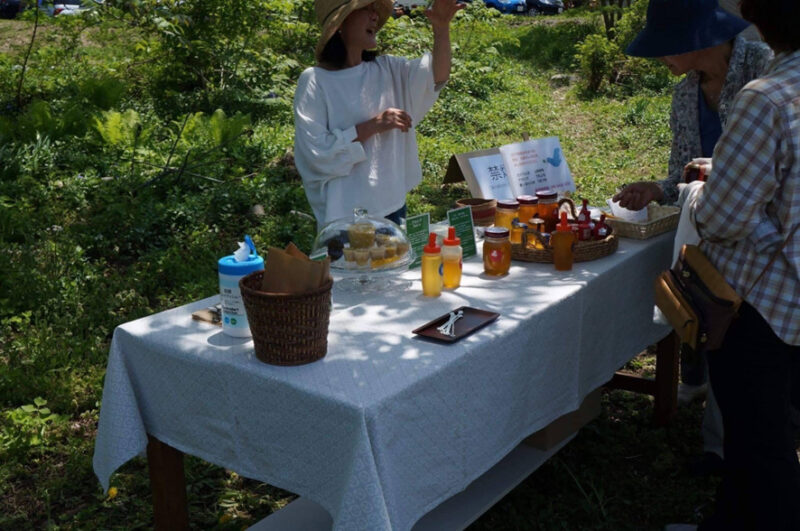
Mariko Shindo of Shindo Bee Farm, who was participating in an event held in Yonezawa City, a product called "cherry" honey that is it was so popular that it sold out immediately when sold at an event in Tokyo. about it , I applied for an interview to hear more about it.
They kindly agreed, and we visited their home (bee garden), where we listened to their stories while keeping our eyes glued to the beehives dotted around them, surrounded by large trees.
Did you get into beekeeping from keeping them as pets?
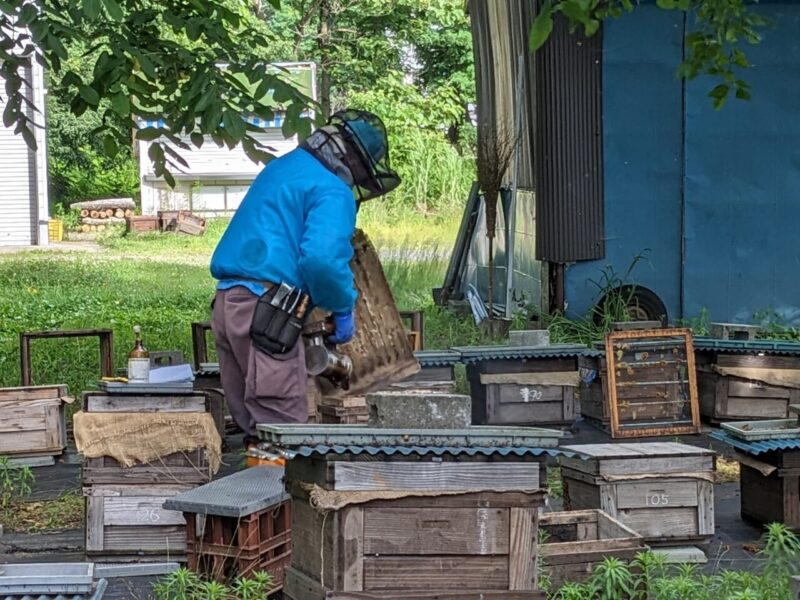
Shindo Bee Garden was founded with two beehives.
The story began when Mariko's uncle, who we spoke to this time, kept bees with the feeling of a certain pet.
After her uncle became ill and passed away, Mariko's father took over the bee about 35 years ago, feeling sorry for her and abandoning him.Currently, his son Kenichi has taken over the bee, and his older sister... A certain Mariko also runs a beekeeping business.
The number of beech boxes that started with two boxes has now increased to over 50, and it seems that they are struggling to take care of the bees every day. Nowadays, I'm having fun being involved with bees, and I'm happy to say "Bees are Fun!" It was said that it is systematic and profound
Before we talk about honey, let's talk about bees!

Bees collect pollen, the raw material for honey, and the hive, which is the basis of their life, is made up of one queen bee and a group of thousands to tens of thousands of worker bees
The queen bee has a body 2 to 3 times larger than the worker bees and continues to lay as many as 1,500 eggs every day. For this purpose, worker bees risk their lives to collect and transport pollen as food.
The queen bee lives about 4 years, 30 to 40 times longer than the worker bees, and leaves offspring.
Does one bee produce one teaspoon of honey?
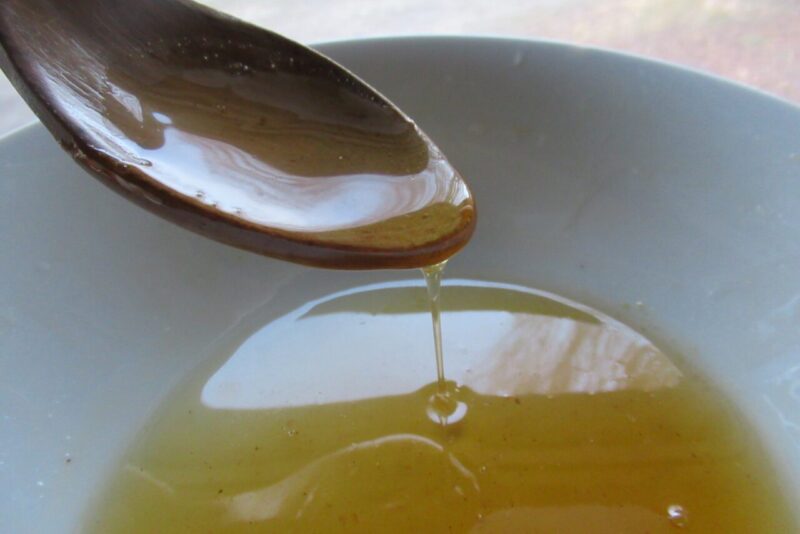
They continue to work hard to collect pollen and raise their children. The lifespan of the .
The amount of honey collected during their short lives is about one teaspoon.
With the help of these worker bees, beekeepers move the hives according to the flowering season and collect honey from each flower.
Honey has a unique taste!
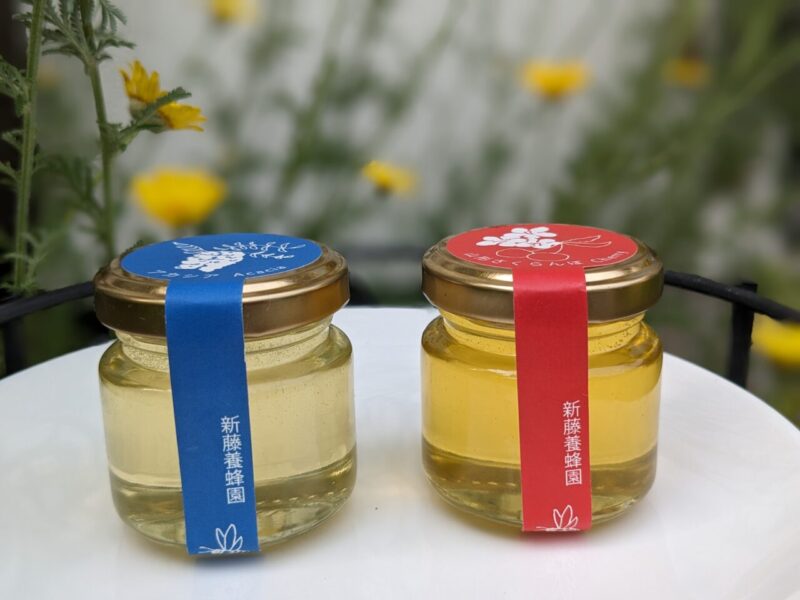
In the image above, the red label is "Cherry" and the blue label is "Acacia" honey . This mini bottle is recommended for those who want to try different flavors.
In addition to the mini bottles that were sold at the event, we also sell honey collected from each flower in three types of bottles, including a cute bear container and three different sizes that can be used in a variety of ways.
The taste and color of honey varies depending on the flowers that the bees collect.
Later, I visited Shindo Bee Garden and had a quick tasting.
When I licked four types of honey, ``Acacia,'' ``Cherry,'' ``Chestnut,'' and ``Lily Tree,'' I was surprised at how different the taste and aroma of honey can be depending on the type of pollen.
First of all, I tried the popular acacia, which had a gentle sweetness without a strong taste.
Next, when I took a sip of the cherry honey, I noticed a slight cherry blossom scent. It reminds me of sakuramochi, perhaps due to the synergistic effect of taste and aroma.
The honey made from the pollen of chestnuts that were in full bloom on the grounds of Mr. Shindo's house is actually chestnut! When you close your eyes and lick it, it turns out to be marron glacé. The taste and aroma are so great that you might be mistaken for it.
Chestnut honey has a strong taste, but it goes well with pizza, and its sweet and salty taste is addictive, so please give it a try.
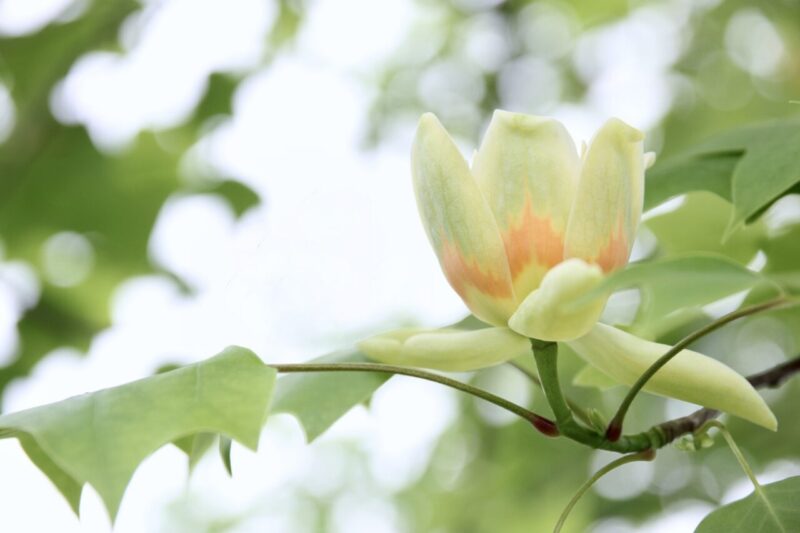
on the vast grounds to provide a place for bees to work . When I looked up, I saw a flower that was also called the tulip tree blooming.
, which is currently in full bloom , has a smooth taste and is suitable for everyone .
The pollen collected by the bees at Shindo Bee Garden is from cherries and wild cherry trees, horse chestnuts, acacias, and chestnuts. We will move according to the blooming period of lily trees and flowers
For cherries to bear fruit, pollination is essential. share the honey we collect
the becomes valuable cherry honey
After visiting Shindo Bee Garden

The scenery surrounding Mariko's home was expansive, and the time passed so pleasantly that we forgot the passage of time.
What's more, the view from the room was like the beautiful climbing roses blooming on the windowsill, and the ivy and honeysuckle surrounding the hut, making it look like a scene from an English countryside town.
After hearing about the life of a bee, I can't help but admire the bees that wander in through an open window.
Mariko, who had lived in Tokyo and overseas, made a U-turn and returned to her parents' home to help with the beekeeping business.The secret to enjoying both work and life in Tohoku is ``excitement.''
“Bees are interesting! It's systematic and profound.'' These words are still stuck in my mind when I first heard them.
Shindo Beekeeper <Information>
- Name: Shindo Beekeeper Garden
- Phone number: 090-6458-282
- e-mail: applehoney2299@gmail.com
Currently, "Shindo Bee Garden" does not have a sales store or do wholesale, so purchases can only be made at sales events held in each region.
Please check the Shindo Bee Garden Facebook page for future developments such as sales events


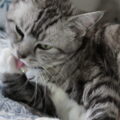
!["Mogami safflower" certified as a Japanese heritage and Japanese agricultural heritage [Yamagata Prefecture] Mogami safflower](https://jp.neft.asia/wp-content/uploads/2022/12/30121446_m-1-150x150.jpg)
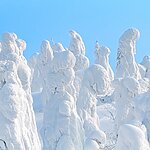
![[Tsuruoka City, Yamagata Prefecture] Tsuruoka's food culture has been passed down for hundreds of years 1470_Zenpoji Temple](https://jp.neft.asia/wp-content/uploads/2023/04/2d6b75e2500adfb8f7b8e6c68a2f7a03-150x150.jpg)
![[Yonezawa City, Yamagata Prefecture] Visit a hot spring connected to the Uesugi family of the Yonezawa Domain 1530_Onogawa Onsen Foot bath](https://jp.neft.asia/wp-content/uploads/2023/05/4ed5d5851f7d92ca3b0ebed3220d6418-150x150.jpg)
![[Yamagata Prefecture] Walking through Tokamachi and Nanokamachi in Yamagata City, where the scent of the Edo period remains Yamagata city from Kasumi Castle Central Observation Room](https://jp.neft.asia/wp-content/uploads/2023/09/26303875_m-150x150.jpg)
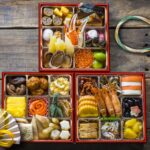
![[Yamagata Prefecture] 3 famous waters in Yamagata Prefecture! Yamagata Prefecture is home to blessed water created by snow, mountains, and forests. Yamagata Falls](https://jp.neft.asia/wp-content/uploads/2023/02/9b639100f52e30365f8499a2f4657724-150x150.jpg)
![Has even a wealthy merchant with more wealth than the feudal lord appeared? Sakata's port that was moistened by Kitamae Ship [Yamagata Prefecture] Kitamae boat at Hiyoriyama Park](https://jp.neft.asia/wp-content/uploads/2023/04/4631946_m-150x150.jpg)




